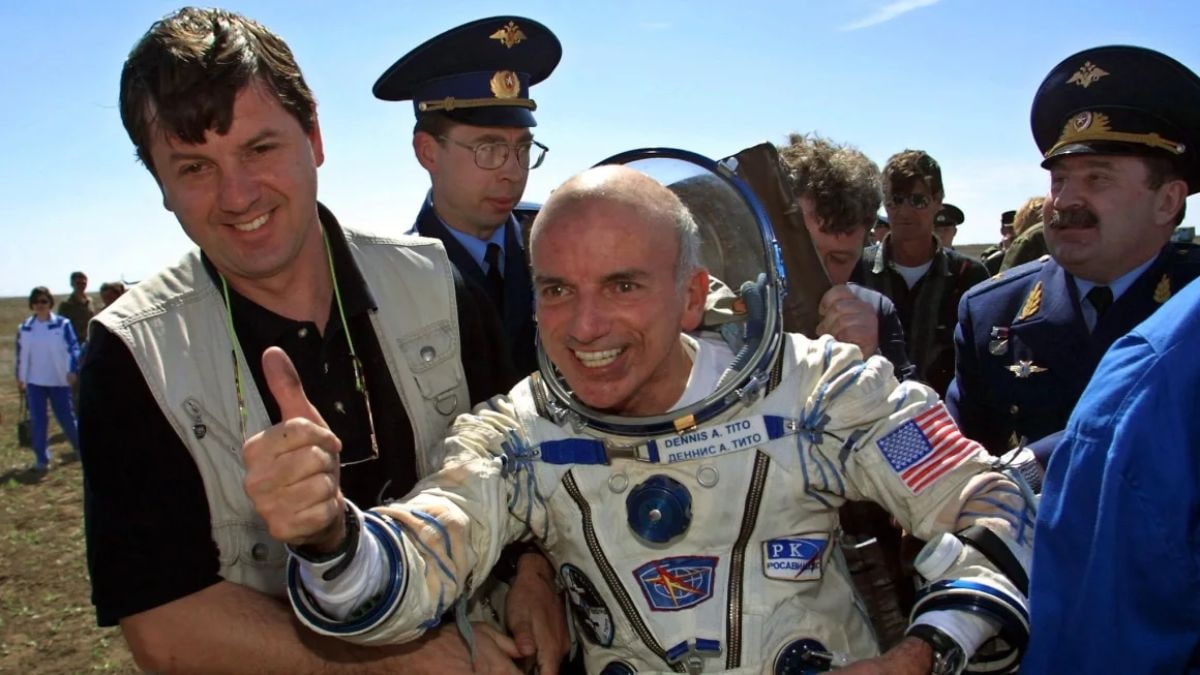April 28 has been a historic day. In 2001, it was the day when Dennis Tito, a millionaire businessman from the US, became the world’s first space tourist. Flying aboard a Russian Soyuz spacecraft to the International Space Station, Tito made headlines not just for his $20 million ticket, but for turning a once-unimaginable dream into reality.
But decades before that, in 1945, April 28 marked the day when Italy’s fascist dictator, Benito Mussolini, was captured by partisans while attempting to flee to Switzerland with his mistress, Clara Petacci. The two were executed, bringing an end to Mussolini’s authoritarian rule and signalling the fall of fascism in Italy. This day also reminds us of one of the darkest moments of the Iraq War.

In 2004, CBS’s ‘60 Minutes II’ aired shocking images from the Abu Ghraib prison, revealing prisoner abuse and torture at the hands of US soldiers. Here’s a closer look at the moments that made history on April 28 in Firstpost Explainers’ ongoing series, History Today . On April 28, 2001, Dennis Tito, an American engineer and former Nasa scientist turned investment manager, made history by becoming the first self-funded civilian to travel to space.
“My dream was to fly in space before I die,” Tito told Space.com . “And I basically came up with that lifelong goal around the time of Yuri Gagarin’s flight.
” By early 2000, Tito had decided it was time to chase that dream. He was approaching 60, and felt the clock was ticking. The oldest person to fly to space for the first time back then was Nasa astronaut Deke Slayton, who went to orbit at age 51 in 1975.
“So I was getting over the hill, I thought,” Tito said. “So I said, ‘It’s now or never.’” At first, Nasa resisted the idea of a tourist on board the ISS.
The agency cited safety concerns and the tight schedule of the mission. But Russia’s space agency, Roscosmos, was more welcoming and backed Tito’s plan. He reportedly paid $20 million for the eight-day journey.
He launched aboard Russia’s Soyuz TM-32 mission alongside two Russian cosmonauts, headed for the International Space Station (ISS). “It was eight days of euphoria,” Tito said in a CNN interview. “I just enjoyed looking at the window, videoing the earth, the portholes, the station.
It was just wonderful,” he recalled. “It just was – whatever I had expected, the best I had expected times 10. It was the best experience of my whole life, those eight days.
” Tito and the crew returned safely to Earth on May 6, landing in the vast steppes of Kazakhstan. His mission opened the doors for future commercial space travellers, eventually inspiring companies like SpaceX, Blue Origin, and Virgin Galactic to explore civilian spaceflight. Benito Mussolini’s downfall reached its grim end on April 28, 1945, marking the fall of fascist rule in Italy.
Once the all-powerful dictator, the 61-year-old Mussolini had, by then, been reduced to a figurehead propped up by his German allies in a puppet regime in northern Italy. As the Second World War neared its conclusion and the Allies advanced steadily up the Italian peninsula, Mussolini knew the Axis defeat was inevitable. Faced with the possibility of being captured by British or American forces, or worse, the communist partisans who had been fighting his supporters in the north, he decided to flee.
Fearing trial and certain execution as a war criminal, Mussolini aimed to escape to Switzerland, a neutral country. He fled with his mistress, Clara Petacci, and the two managed to reach the Swiss border. But their hopes were dashed when they discovered that the border guards had already sided with the partisans.
It didn’t take long for them to be captured. Once in partisan hands, Mussolini and Petacci were executed—shot without trial. Their bodies were then loaded onto a truck and taken to Milan, where they were hung upside down and displayed publicly for revilement by the masses.
April 28, 2004, saw the broadcast of graphic images that would forever tarnish the reputation of the US military abroad. CBS’s “60 Minutes II” aired photographs showing US soldiers torturing and humiliating detainees at Abu Ghraib prison in Iraq. The pictures revealed brutal scenes: prisoners hooded, stripped, beaten, and subjected to degrading treatment.
In at least one instance, the Army tortured a prisoner to death. As the photos circulated globally, the fallout was immediate. President George W Bush addressed the nation, assuring the public that the abuse was the work of a few rogue soldiers.
But as more evidence emerged, those reassurances began to unravel. An official from the International Committee of the Red Cross would later describe the abuse not as isolated, but as part of “a pattern and a broad system” entrenched within the Department of Defence. The scandal revealed deep violations of the Geneva Convention and ignited fury among the American public.
It also severely damaged the global reputation of the Bush administration..
Top

History Today: When US millionaire Dennis Tito became the world's first space tourist

April 28 marks the day Dennis Tito, a millionaire businessman from the US, became the world’s first space tourist in 2001. He self-funded his trip to space for $20 million aboard a Russian Soyuz spacecraft. It was also the day when Italy’s fascist dictator, Benito Mussolini, was executed in 1945











